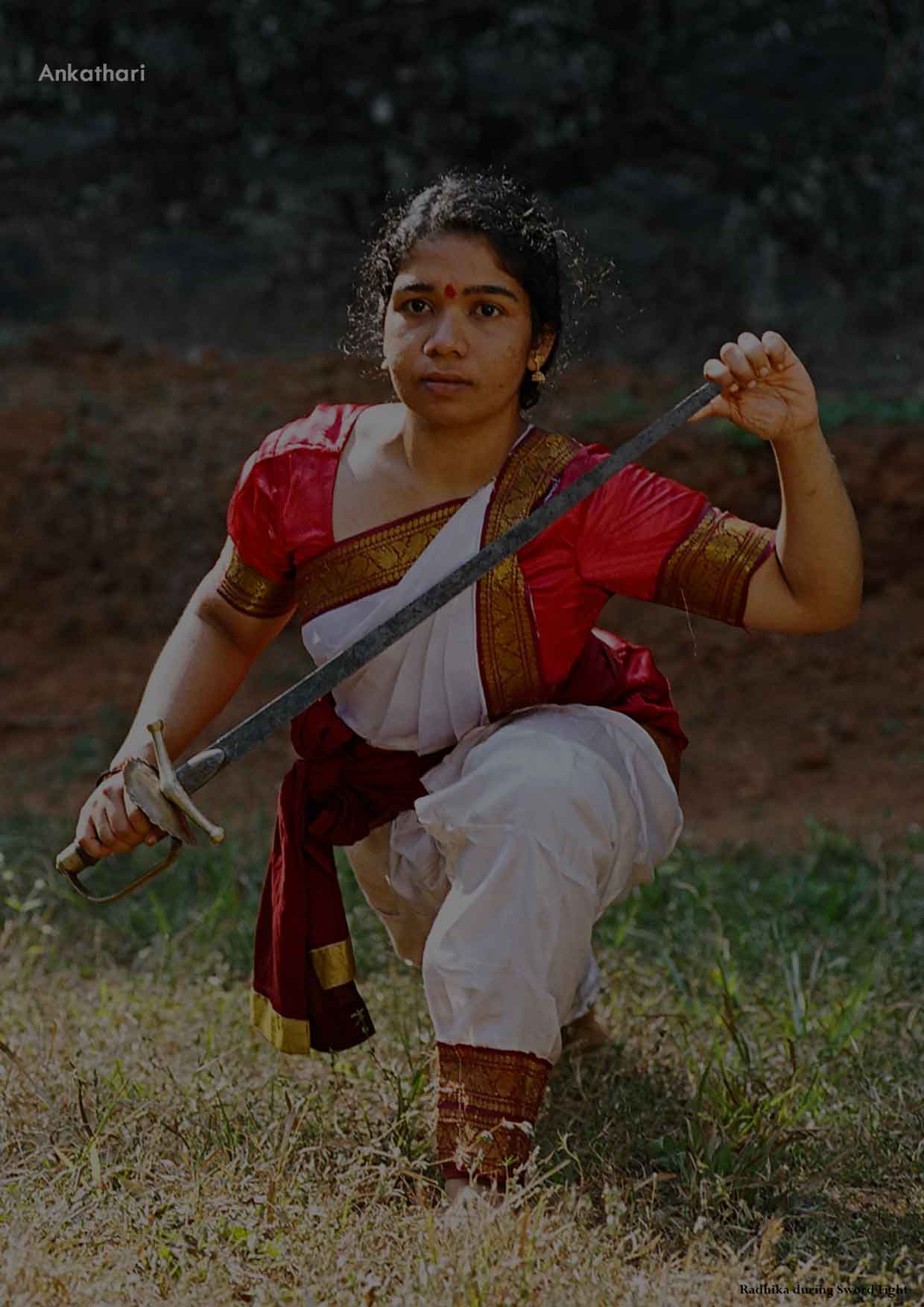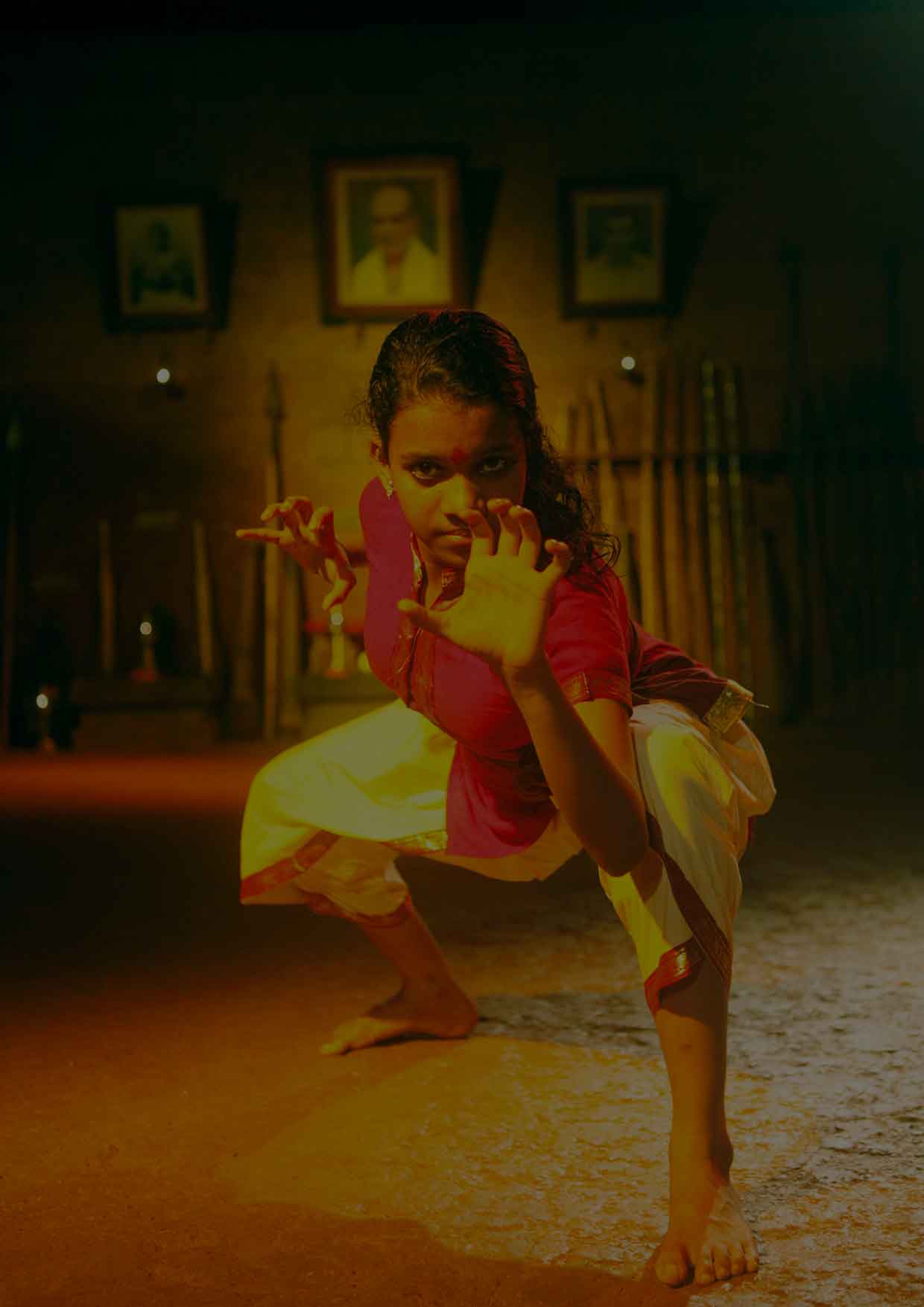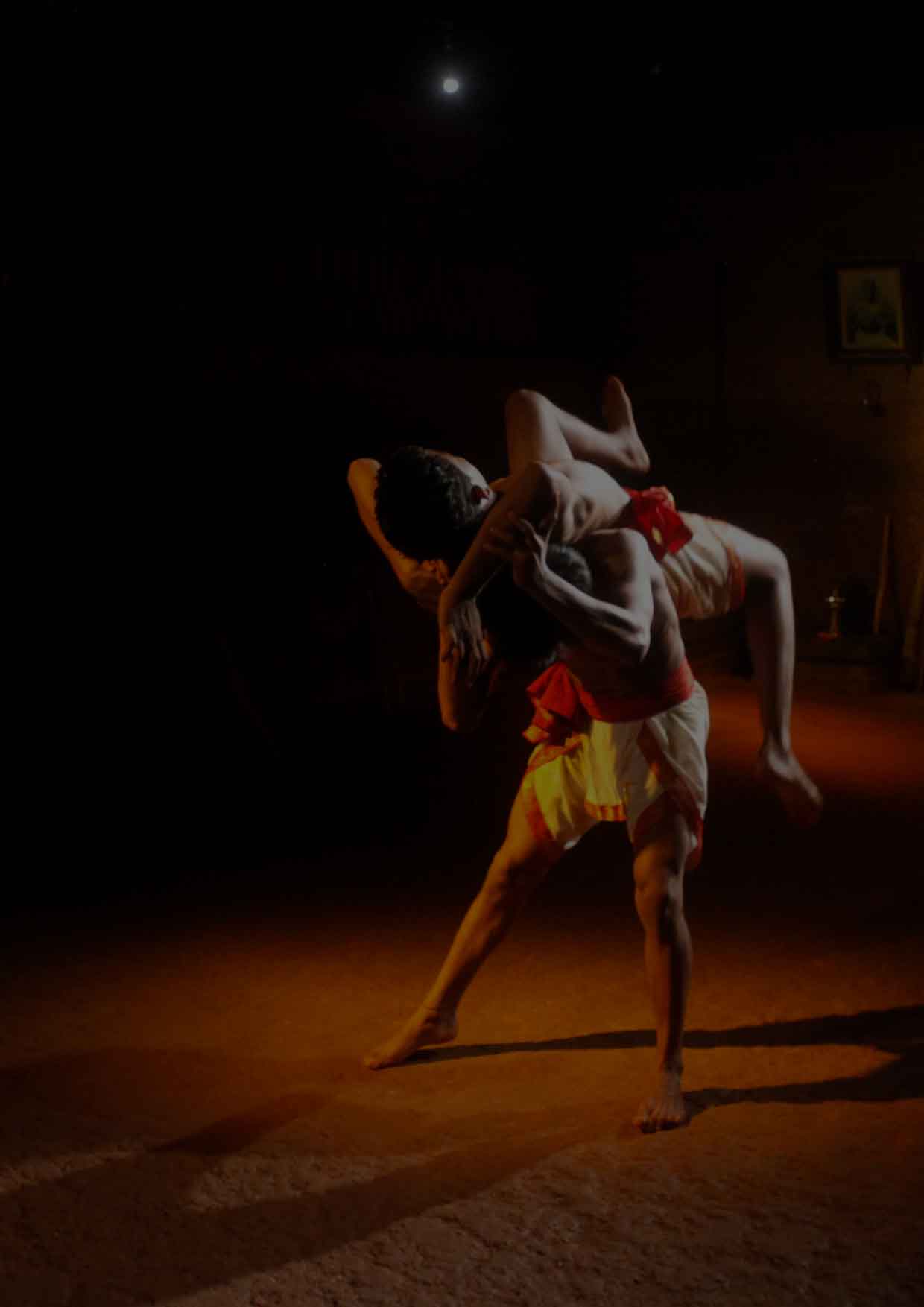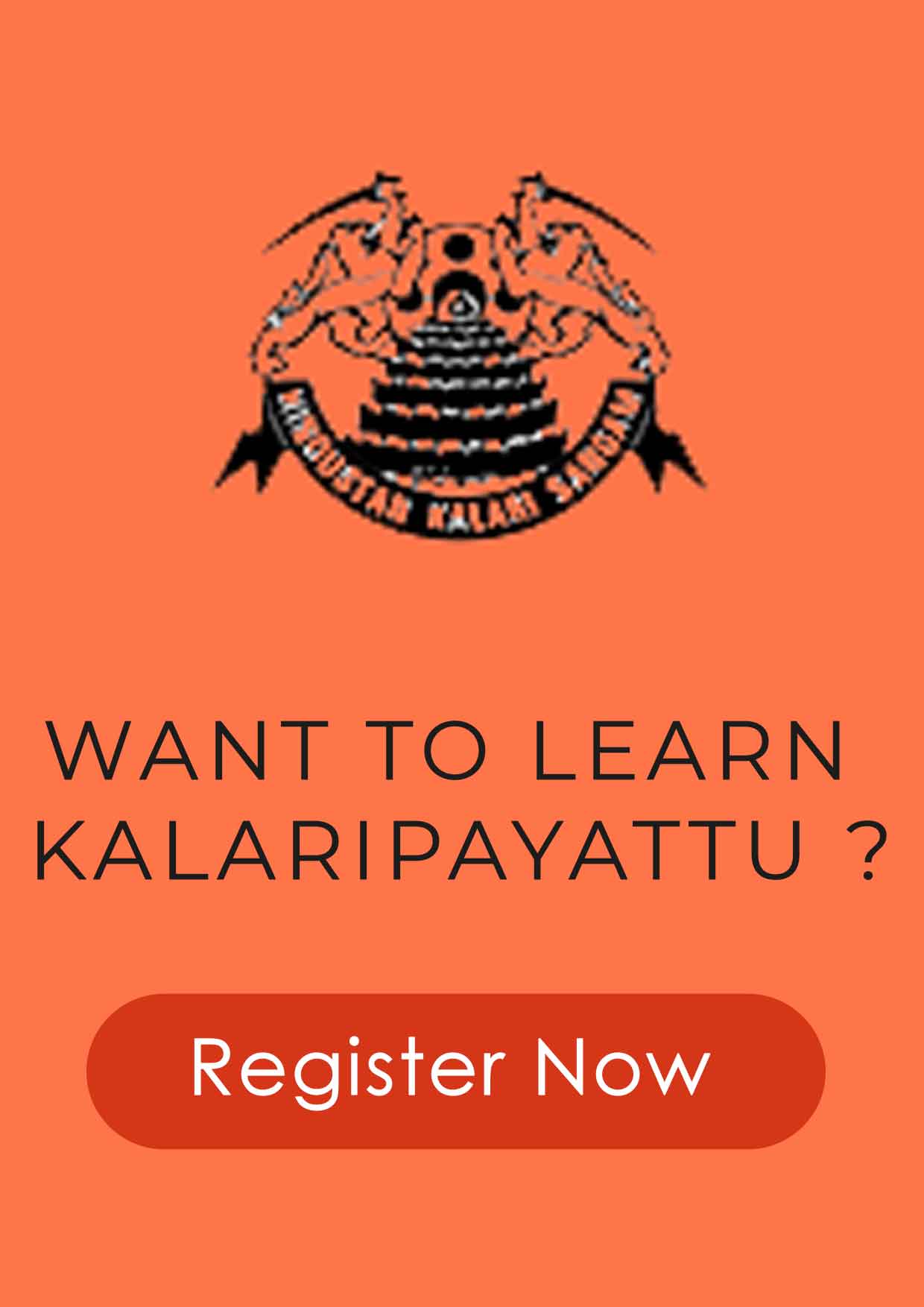Kalari Marma Chikitsa
Kalarippayattu is the oldest form of oriental martial art encapsulating Kerala’s unique cultural mytho-historical heritage. Here the term Kalarippayattu is derived from the combination of two words as ‘Kalari’ which means the training place and ‘Payattu’ means the training. Kalari is considered as the arena where a traditional physical discipline, which cultivate mental, physical and spiritual benefits. The Kalari legacy is also considered as a scientific system of physical-culture training beneficial to the modern sportsman and physical culturist. If the ‘lived body’ in its concreteness is the site of experience and source of knowledge for the practitioner, contemporary discourses and representations of the body and martial practice play a crucial role in shaping the fundamental assumptions of his body and the experience of practice. So this particular scientific heritage inherits the technology of the body through which self, agency, power, selves and behaviors develops in a right manner. The system is developed in southern part of Kerala as a science of making a warrior to reach his optimum potency to lead the country free from attacks.The arena of practicing this spiritual art is called as Kalari which literally means a place where the knowledge is being taught. The oriental architechtonic science “VASTU SASTRA” determines the architecture of the Kalari space in a scientific manner. The Kalari space is a hand made pit dug out the ground about five feet deep with a pounded earth floor with a thatched roof. To the south-west corner of the pit, is the Poothara, a seven tiered platform where the guardian deity of the Kalari resides. The Kalari arena posses a spiritual height of a temple where there is many sacred rituals are carried out in a daily basis and as in a special day’s order. So the Kalari arena is a center for training and healing and also served as a temple.
Stages of Training The training is mainly divided into four parts consisting of Meippayattu, Kolthari, Ankathari and Verumkai.

Meippayattu
Meithari is the beginning stage with rigorous body sequences involving twists, stances and complex jumps and turns. Twelve meippayattu exercises for neuromuscular coordination, balance and flexibility follow the basic postures of the body.
Kolthari
Once the student has become physically competent, he/ she is introduced to fighting with long wooden weapons. The first weapon taught is the Kettukari, which is usually five feet (1.5 m) in length, or up to the forehead of the student from ground level. The second weapon taught is the Cheruvadi or Muchan, a wooden stick three palm spans long, about two and a half feet long or 75 cm. The third weapon taught is the Otta, a wooden stick curved to resemble the trunk of an elephant. The tip is rounded and is used to strike the vital spots in the opponent’s body. This weapon is considered the master weapon, and is the fundamental tool of practice to develop stamina, agility, power, and skill. The training in ‘Otta’ consists of 18 sequences.

Ankathari
Once the practitioner has become proficient with all the wooden weapons, he/she proceeds to Ankathari (literally “war training”) starting with metal weapons, which require superior concentration due to their lethal nature. The first metal weapon taught is the Kadhara, a metal dagger with a curved blade. Taught next are sword (Val) and shield (Paricha). Subsequent weapons include the Ankathari AYURVEDA & Health Tourism 2 3 MARCH 2014 spear (Kuntham), the flexible sword (Urumi or Chuttuval), an extremely dangerous weapon taught to only the most skillful students. Historically, after the completion of ‘Ankathari’ training, the student would specialize in a weapon of his choice, to become an expert swordsman or stick fighter.

Verumkai
Only after achieving mastery with all weapons forms is the practitioner taught to defend his/her person with bare-handed techniques. These include arm locks, grappling, and strikes to the Pressure Points (Marmam), the vital points of the body. The Gurukkal teaches knowledge ofMarmam only to those students whom he trusts, restricting knowledge to the very few.
Kalari Chikitsa. (Specialty ayurveda Practices in kalarippayattu heritage) Kalari chikitsa, is the collective therapeutic methodologies developed within the kalari abode. The practices involves chiefly the management of orthopedic, sports medicine and the management of neurological ailments. The practices collectively known regionally as Marma chikitsa. It can be further explained as Kalari chikitsa is a natively originated postdevelopmental therapeutic heirloom of Shalya tantra division of Ayurveda. The participant of kalarippayattu tradition experience awareness about the integrity of the constitution of the human system. When the process of learning progress he establishes a integrated awareness about the functional and emotional aspects of system in the wellnessstage as well as in the ailing stage. It is experienced as the build of consciousness within is due to the spiritual disciplines, he follows within the arena of practice. One can find the kalari system is build upon the scientific reasoning of ayurveda, yoga, vasthu shastra and Tantra
shatra mainly. The awareness about one’s own self leads the disciple to un derstand the wellness and ailment status of the others.
Kalari Uzhichil (Kalari massage)
The specialty discipline of the Kalari legacy is the massaging practices involved in the Kalari tradition. The maneuvering is traditionally known as Kalari uzhichil or Kalari massage. Here, in this practice, the entire body is massaged with medicated oil in a very methodical way. The strokes involved in the massage, is practiced in the way of Akshara kettu and Akka kettu, known traditionally, which means the strokes of the massage is executed in the form of letters and numbers. The massage is executed by hand as well as by the feet of the therapy personal. A person who succeed in the whole training of Kalarippyattu is only allowed to practice and execute the Kalari massage, traditionally. A firm body stability, self control, meditative mind and clean flow of Vata within the body of himself is needed to execute the therapy maneuvering to the ailing body, for experiencing the optimum healing effect. The massaging practice chiefly helps to facilitate the healthy and accurate flow of Vata energy in the system, in-turn helps to promote healthy tissue conversion, waste disposal and harnessing of body-mind-soul coordination and integrity. This therapy module is the principle way to treat various disorders of the body such as, inter-vertebral disc prolapses, cervical spondilitis, frozen shoulder, and many other disease conditions pertaining to musculoskeletal and neurological origins. The main distinguishing feature of the Kalari master’s medical expertise from that of others are his psycho-physiological training as a martial artist and his practical knowledge of the body’s vital spots, ‘Marma’. The massage harness the functionality of Marma leads to impart corrective measures for healing the system and to rejuvenate the body. Other main important factor in giving the massage therapy is the usage of various kind of medicated oil preparation in the therapies. Basically the oils or fats are categorized in a special group Sneha (The oleaginous compounds). the main genre of the substances are Taila (Vegetable fat especially sesame oil), Ghruta (ghee), Vasa (muscle fat), Majja (bone marrow). These substances are used alone unprocessed or usually processed with various medicaments. The usage of these medicated oils are in variety of manner like the medicated oil is used to apply over head, another variety is used to apply all over the body and some oils are used to take internally. The medicinal combination are usually differing from the classical Ayurvedic literatures and is confined to the family traditions. Asthi bhanga chikitsa of kalari. (Bone fracture management in kalari tradition) The Kalari Chikitsa has got its distinctive way of treating various kind of bone fractures and joint dislocations happening to the humans. The Kalari Chikitsa is capable of healing any kind of bone fractures which are not in the category of surgical intervention such as, fractures of skull etc. A very descriptive illustration of bone fractures and joint dislocations are described in various texts of Ayurveda. A concise description is given below. The injury happens to bone and joints are classified in two main variants in Ayurveda such as Sandhow bhagna (Dislocations) Asandhow bhagna (Bone fractures) The former division, dislocation is classified further in to six as
1. Utplishtam
2. Vishlishtam
3. Avakshiptam
4. Atikshiptam
5. Tiryakkshiptam
6. Vivarthitam
The later division, the fracture of the bone is classified in to 12 as,
1. Karkatakam
2. Vakram
3. Sputitham
4. Vellitham
5. Asthichallikam
6. Aswakarnam
7. Pichitham
8. Daritham
9. Choornitham
10. Atipathitham
11. Seshitham
12. Majjanugatham.
A very descriptive details are given in the classic literatures of Ayurveda for each variants with signs and symptoms with management protocols and prognosis as well. The management modalities includes, the correction of dismantled broken bones to its real position, retaining the broken bones to its original position by means of plastering it with herbal preparation, splinting, bandaging etc.

The various type of bandaging (Bandha) practices are described in 14 ways as below.
1. Kosha bandham
2. Dama bandham
3. Swasthika bandham
4. Anuvelita bandham
5. Pratoli bandham
6. Mandala bandham
7. Sthagika bandham
8. Yamaka bandham
9. Khatwa badham
10. Cheena bandham
11. Vibadha bandham
12. Vitana bandham
13. Gophana bandham
14. Panchangi bandham.

Apart from the reduction and bandaging methods, the patient is advised to consume Ayurvedic preparation of various kinds to, enhance the fracture healing, antiinflammatory medicaments and drugs to heal the wounds if any. The methods adopted are works as Vrana ropana (wound healing), Asthi sandhana (fracture remodeling), Vedanasthapana (pain reducing). Kalari chikitsa in Post operative orthopedic rehabilitation The Ayurveda Kalari way of treatment modalities are the treatment choice for post operative orthopedic rehabilitation. The therapies help to regain the health of musculoskeletal system to bring back the accuracy of musculo-skeletal integrity and regain the strength back. Various medical modalities such as medicated rice bolus pouching, oil baths, bandages, fomentation of various kinds, other exercise patters are helps to treat the conditions.

Kalarippayat Movement therapy (KMT)) Kalarippayattu Movement Therapy ‘KMT’ is a movement based healing methodology based on body dynamics. The body movements in kalari tradition is chiefly classified as Chuvadu (Feet position), Vadivu (posture) Nila (Stance), Neekam (Forward movement), chattam jumps), adavu (Tactics)). Each of the above is developed by using the principle of yoga, ayurveda and tatra shastra. Effective practice of the movement aspects of kalari helps to regain and strengthens the human system. This has brought newer insights as to how effectively Kalarippayattu Movement can be used to bring about changes in people, suffering from physiological and psychological ailments. Kalarippayattu Movement Therapy has a broad range of health benefits. It has been demonstrated to be clinically effective at improving body image, self-esteem, attentiveness, and communication skills. It can also reduce stress, fears and anxieties, as well as lessen feelings of isolation, body tension, chronic pain, and depression. In addition it can enhance the functioning of the body’s circulatory and respiratory systems. Kalarippayattu Movement Therapy has also been shown to benefit adolescent and adult psychiatric patients, the learning disabled, the mentally handicapped. Proponents of Movement therapy claim that it has also been used successfully to help people deal with neurological diseases, arthritis, stroke, cancer, and a number of other physical ailments.




 by Irizz Technology
by Irizz Technology